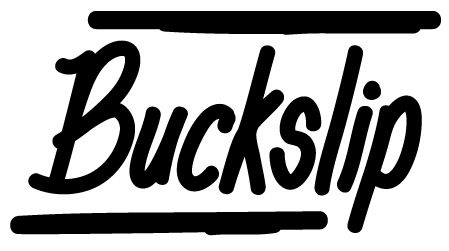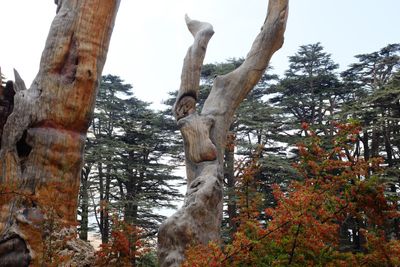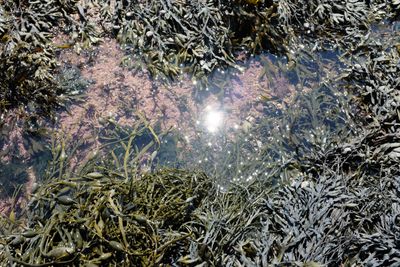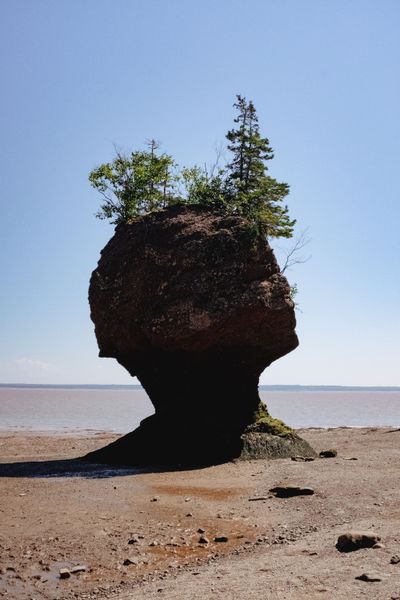The Thing
But I guess what I’m trying to say is that the world is like a sleeping tiger and we tend to live our lives there on its back. (We’re much smaller than the tiger, obviously. We’re like Barbies and Kens on the back of a tiger.) And now and then that tiger wakes up. And that is terrifying. Sometimes it wakes up and someone we love dies. Or someone breaks our heart. Or there’s a pandemic. But this is far from the first time that tiger has come awake. He/she has been doing it since the beginning of time and will never stop doing it. And always there have been writers to observe it and (later) make some sort of sense of it, or at least bear witness to it. It’s good for the world for a writer to bear witness, and it’s good for the writer, too. Especially if she can bear witness with love and humor and, despite it all, some fondness for the world, just as it is manifesting, warts and all.
— George Saunders, in a letter to his students
While we were gone, the Cannonball Run record was shattered, and I have to admit I did not manage to achieve anything nearly so impressive. Driving aimlessly around the empty streets of Toronto on designated outside time (stretching the supermarket run a little further, just to see the empty streets, the city park barricaded by armed police lest we want to see cherry blossoms), it seemed to be other drivers (and skateboarders) intent on setting speed records, while the rest of us just sort of let the otherworldliness sink in. As Geoff Dyer writes in this great short piece on street photography, considering Garry Winogrand’s shots in light of the pandemic, it’s been hard to capture “the psychic terror of the times” in photographs of empty streets. "The source of the threat is invisible and its effects, overwhelmingly, are of absence. Its symbol, the mask, hides from view."
Thanks to the readers who sent such beautiful notes and thoughts – it’s been nice to be in touch with you one-on-one, even while not getting around to actually sending this. Maybe we can keep doing both! A couple of you did express interest in a Zoom thing – are you all tired of those yet? Should we? We did put together a new site for this here email, with a better archive, which hopefully does better justice to the full glory of Chris L’s illustrations. That’s a body of work right there. Hopefully the site makes Buckslip easier to share, or spend time with. It’s nice not to be penned in by an email chimp in a cute hat that I don’t entirely trust.
The reason there’s a new website is mostly because when I can’t write I code. It’s that or reinstall Football Manager, and that’s just not a good option for any of us. But it does give us the space to start experimenting with some new Buckslip-adjacent features like interviews in the weeks ahead. None of that yet, but there will be. Be assured we’ll feature these things in here — this remains an email first and foremost.
It’s funny, my first play (which about five of you saw) was partly about the ways we respond in moments of disaster, how the mediation of modern screen culture alienates us from that. How the visceral need to respond, somehow, anyhow, overwhelms. In this moment, it feels about half true. Like most writers, I defaulted to us all falling apart. We haven’t. We’re lonely, still. But we’re here. My second play, still unfinished, sitting in the drafts folder for too long now, seems to be about how the one thing that remains after all is gone, other than the returned wild of course (nature is healing! etc), is the need to communicate. Intimacy remains when society doesn’t. I guess I knew that, because we probably all did. Of course, I’ll probably never finish that one now — semi-comedies about total societal collapse are probably off the menu for a bit. Like Ted Chiang says, “what we’re living through is only partly a disaster novel; it’s also—and perhaps mostly—a grotesque political satire.”
A couple of weeks ago I received a typewritten letter from an old man who means a lot to me, whose work always has. We exchange letters at the pace of about one a year, sharing interests, what we’ve been writing, what we’re hoping for, how our bodies and minds are holding up. I’d been telling him last year about the travelling I’d been doing to places like East Timor and Lebanon, the stories I was looking for there, things which were still possible when I last wrote. He reminded me in this new letter (anticipating the question I hadn’t asked him yet) that, as we rebuild societies after the pandemic, we’ll need to do so with internationally aware stories, founded in the human and the universal, not the nationalistic. I’ve turned my mind to thinking about how I can get back to telling those, without moving. It’s slowly turning into an exciting thought, amidst the general sadness and drift. It seems like something to build on.
What have you all found to build on, if anything?
– Patrick
Things
“OPEN SOURCE RECIPES TO BE USED IN QUARANTINE DURING A GLOBAL PANDEMIC.” (By way of a bunch of our chefs, what Toronto tastes like, if you can only visit it in your kitchen.)
Poets love the word petrichor, that earthy smell in the air when it first rains after a long time dry. Not sure if poets also care for the science behind it, but we love this new study which suggests what we’re actually smelling (the compound we call geosmin) is the result of a 500-million-year coevolution, released by streptomyces bacteria in an attempt to attract an arthropod called a springtail, which will in turn spread its spores. Just so you know.
“Machines. Inventions. Power. Black out the past. Forget the quiet cities. Bring in the steam and steel. The iron men. The giants. Open the throttle. All aboard, the promised land. Pillars of smoke by day. Pillars of fire by night. Pillars of progress. Machines to make machines. Production to expand production. There’s wood and wheat and kitchen sinks and calico all ready made in tonnes enough for tens, thousands, millions. Millions! Faster and faster, better and better!"
IT’S TIME TO BUILD, shouted Marc Andreessen. Which for some reason brought to mind Lewis Mumford spitting venom back in 1939, with his nightmare vision of the modern city. In trying to articulate our issues with the Andreessen piece, and why it just seemed to sum up so much of what the VC mindset misses of lived reality, we were tempted to try to write an essay, but we won’t. Paul Ford and Rich Ziade do a good job in a generous, good faith manner on their Track Changes podcast, and they pretty much get to the heart of it: “I guess the question I would pose to Marc Andreessen is: how do you install a different set of motivations outside of commercial profit so that that kind of innovation can happen inside of a school system or inside of a transit system… You wanna write a killer essay? Write that essay, right?” Smoke makes prosperity, no matter if ya choke on it.
It’s not time to build for Sidewalk Labs in Toronto, as the Google-affiliated property developer quietly slinks away under cover of Covid from a planned showcase smart city development in our city’s Port Lands that turned out to be a teensy bit less popular than they’d anticipated. Honestly, we’ll admit to being surprised. Though many around us had confidently proclaimed that “they’ll never lay a single smart brick”, and fierce advocates we love and respect committed their professional and unpaid hours to exposing the project’s privacy uh…. shortcomings… we honestly believed some version of the project would actually happen. We had a vague hope that the questions and realisations it forced from community and governments and the developer might have led to some kind of interesting, limited experiment in what a “smart” city should be, rather than what it could be in a purely Silicon Valley mode of thinking? But that would have required a developer who understood civic engagement meant more than Post-It sessions that look good as an IG story, and a civic and institutional leadership prepared to properly engage in co-creation, not confused bureaucratic backroom muttering. As John Michael McGrath writes, “Sidewalk’s PR offensive in Toronto was always aimed at winning the argument in boardrooms and behind closed doors … and it seemed totally unprepared to make the case to the general public. When it tried, its efforts were often patronizing or ham-handed.”
We would add, making the case necessarily also involves listening. So now we wonder, what did we learn from all of this? If Sidewalk had produced more effective comms, not just tote bags, would people have been ok with the reality of it? What will the public desire for this kind of fancy concept-car city building be, on the other side of the pandemic? How have the hard questions and conversations the debacle has raised been stored and catalogued for the next time a less high profile developer wants to do something just as invasive but less sexy to mobilise against? All that time we spent working out what a data trust, for instance, might look like in responsible terms, which is not at all what Google thought it should look like. Where do we put that for next time?
The one thing we still really want to know — somewhere around page 124 of this monster “digital innovation appendix” from late last year, Sidewalk outline some actual specifics of “Koala”, the magical “USB port” for urban infrastructure they claim to have invented. We still haven’t seen anybody report deeply on this idea, which is a shame because it actually seems really cool in theory, and we wonder now if anybody gets to call them out on whether it was really a thing, or just a nice CAD drawing?
Want to read a novel based on the lives of dropshippers in Bali, please.
“After we have defeated the virus, when the cinema industry has woken up from its stupor, this new group, as moviegoers, wouldn’t want to take the same old cinema journey. They have mastered the art of looking; at the neighbors, at the rooftops, at the computer screens. They have trained through countless video calls with friends, through group dinners captured in one continuous camera angle. They need a cinema that is closer to real life, in real time. They want the cinema of Now which possesses no fillers nor destination.
Then they will be introduced to the films of Béla Tarr, Tsai Ming-Liang, Lucrecia Martel, maybe Apichatpong and Pedro Costa, among others. For a period of time, these obscure filmmakers would become millionaires from a surge of ticket sales. They would acquire new sunglasses and troops of security guards.”
We’re on board for Apichatpong’s dream.
"I am writing this profile, and you are reading it, in an impossible world,“ Sam Anderson writes in his perfect-in-every-way profile of Weird Al Yankovic in the NYT Mag from a few weeks back. “National economies collapse; species go extinct; political movements rise and fizzle. But — somehow, for some reason — Weird Al endures.” There’s a real joy to reading Anderson in full flight — he has this magical ability to look at the world, and his subjects, with an unfiltered and glorious blend of empathy and wonder. Just as with his monumentally good pieces on The Good Place and Rick Steves, here he takes on Weird Al without irony or cynicism. It’s an earnest piece full of goodness, and joy. We’re not going to proclaim the end of irony just yet, but maybe in this impossible world, Anderson’s is a tone we’re going to crave a lot more of. (And here it is in audio form, if consuming longform features still isn’t working for you, which is fine!)
Venus in sweatpants
That's who you are
And when this mess is over
I'll buy you a car
- Randy Newman
Remember the beforetime, when the day’s playlist wasn’t usually determined by who had recently died? When we could listen to music as just music, and not as an act of commemoration? We’ve done the deep dive into old episodes of Night Music (1988-90), the short-lived network TV show on which Hal Willner served as musical director, creating a space where it was possible for the disparate likes of The Residents, Kronos Quartet, Aster Aweke, and Conway Twitty to share the same stage, laying the groundwork for the curatorial culture we take for granted today. This week, with the news of Florian Schneider’s passing (though not from Coronavirus), there were a couple days of almost nothing but Kraftwerk. And then there was the John Prine extended session before that.
These benders can be fun for while, but the poignancy almost gets in the way. There’s a limit to how much joy you can find rooting around the past when tomorrow looks so uncertain.
Happily, we still have Randy Newman to comfort and serenade us (Stay away from me / Words of love in times like these). Or the likes of Nick Currie, better known as Momus, the Scottish-born singer-songwriter once affectionately described as “the Ray Davies of marginal intellectual pursuits”. For much of the past three decades, Momus has been putting out an album just about every year, a musical practice he described as a kind of topically-themed diary-keeping to Chris when they met up for lunch in Osaka a few years back. (“This next record will have to have Brexit on it, so it’ll be like a post-breakup record,” he said.) According to the BBC, Momus is now close to finishing a new album about the pandemic, largely written while he was himself battling a mild case of Coronavirus symptoms at his home in Berlin.
Thank you Japan, for Amabié — the mascot we need now. Less sure how we feel about Singapore’s new distance-enforcement Robo-dog.
Pussy Riot’s Nadya Tolokonnikova shares survival strategies from her time in prison to help get you through quarantine.
“Reading Derek Jarman is strangely consoling.”
And finally, after the best part of a year, Patrick made another very long mix in his “We Must Love Each Other or We Must Die” series – named for the most terrifying political ad of all time, named even better for now, perhaps? Hopefully you’ll find it good strange company in the iso-days – the previous mixes are all also now up on the new BS site with playlists. They might even come more often from here.





